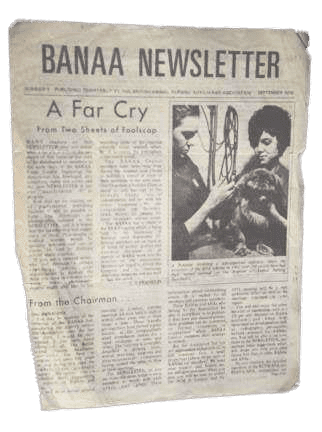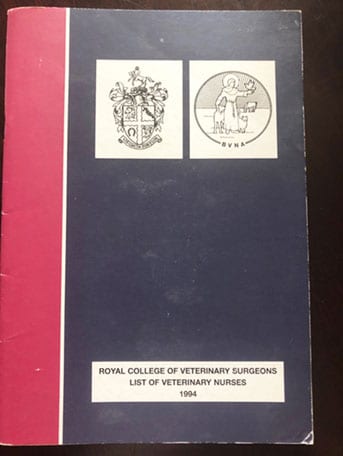Owners expect to see RVNs in clinic. They are, after all, a vital part of the veterinary team and their presence would surely be sorely missed.
But it was not ever thus. Indeed, had it not been for some forward-thinking individuals in decades gone by, the role may not have progressed as rapidly as it has – or worse, not come to fruition at all.

Thankfully, for generations of animals and owners, it did – albeit via incarnations including “specially trained canine nurses”. Here, The Veterinary History Society and RCVS Knowledge take up the story…
1888
Veterinary scentist JH Steele wrote nursing required “strict attention to the animals’ comfort and well-being in matters of warmth, quietude, cleanliness, pure air and diet”.
1925
Louis Sewell, vet to Queen Alexandria, wrote about “specially trained canine nurses” costing from £2.10s to £3 per week, live-in, and of a Distemper Hospital in Knightsbridge.
1934
FW Cousens, vet to King George V, said his nursing home had a medically qualified hospital matron at the helm. He claimed it was “the first attempt at training women nurses for dogs in this or any other country”. He tried to get the RCVS to recognise the title “canine nurse” after passing a suitable examination and being granted a certificate of efficiency. He recorded the council would “not entertain the idea”, adding: “Of course, the council will come round to my views, probably sooner rather than later.”
1939-45
Progress hindered by the Second World War.
1947
A new edition of Hobday’s Surgical Diseases of the Dog and Cat included a chapter on veterinary nursing by Phyllis Peake, who was a qualified SRN and MRCS.
1948
Hamilton Kirk, a leading small animal vet, wrote nursing was an important part of the successful treatment of canines and felines. He noted the nurse “should have limitless patience… exercise gentleness and forbearance and possess the ability to observe”.
1961
The registered animal nursing auxiliary scheme was approved and veterinary nursing became an officially recognised professional qualification.
1962
The first animal nursing auxiliary qualified.
1965
The BVNA was formed (it became the British Veterinary Nursing Auxiliaries Association the following year as the term “nurse” was protected until 1984).
1984
The title “veterinary nurse” is first used.
1991
The Veterinary Surgeons Act 1966 is amended and the nurse role is formally recognised in law (Schedule 3).
1992

The first Diploma in Advanced Veterinary Nursing (Surgical) group qualifies.
1997
The RCVS is accredited as an awarding body for vocational qualifications.
1998
RCVS starts to offer nationally recognised vocational qualifications and the first undergraduate courses become available.
2000
The first equine VNs qualify.
2002
VN council is established and the first BSc(Hons) in Veterinary Nursing cohort is awarded.
2007
Non-statutory register of veterinary nurses started.
2010
RCVS council has its first VN.
2011
A disciplinary system is introduced for RVNs.
2012
A new Code of Professional Conduct includes, for the first time, a declaration to be made by the RVN on professional registration.
- With thanks to RCVS Knowledge and The Veterinary History Society.
Veterinary Nursing Awareness Month
Veterinary Nursing Awareness Month (VNAM) started life as National VN Day
It was launched by the BVNA in 2005 to spread the word about the importance of the VN role in practice and the provision of responsible pet care to the public.
It then progressed into National VN Week and turned into a month-long campaign in 2012.
Each year, the BVNA sees a steady increase in the number of veterinary practices and colleges throughout the UK getting involved with promoting the role of the veterinary nurse by organising a range of events – from sponsored sky dives to pet health checks in the park and practice open days.
To encourage veterinary nurses, students and practice staff to become involved, the BVNA posts out free VNAM packs – including a poster and other promotional items – to everyone who registers their interest, so they are at least able to make a display within their practice or college.

Leave a Reply